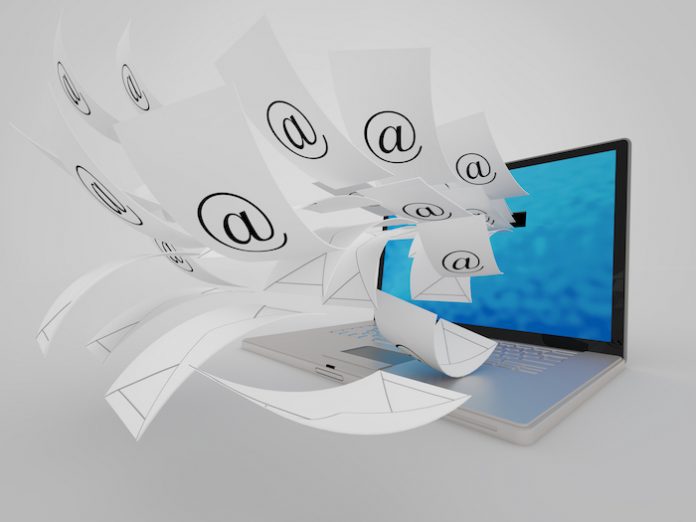There was a massive upswing in email volume at the start of the pandemic which changed the pattern of email engagement. Send volume continued to rise throughout 2020, according to Validity’s latest research report, “Disruption: How the 2020 Pandemic Changed Email.” At the same time, fears about the coronavirus and major changes in people’s life circumstances affected both when and how much people engaged with email.
Throughout the pandemic, the Validity team has been closely monitoring email engagement trends, isolating patterns and learnings that can help email senders. Here, we’ll examine the changing patterns in email engagement and discuss what sales and marketing professionals can do to increase email engagement as a result.
The First Wave: A Hunger for COVID-19 Information
In mid-March 2020, when the World Health Organization declared COVID-19 a global pandemic, even companies that had not traditionally been using email were forced to shift everything they were doing to digital marketing. They needed to quickly communicate new hours to their customers, share how they were addressing safety issues, inform people about new shopping guidelines, and so on. Many organizations also reached out with expressions of empathy, solidarity, and support. This drove a massive spike in the volume of emails being sent.
Validity research also revealed a short-term but intense peak in email engagement during these early days of the pandemic. At that point, COVID-19-related emails represented the lion’s share of messages, and they were seeing especially high engagement. Recipients were 30% more likely to open a pandemic-related email in March. Open rates for these messages were much higher on weekends, when people seemed to be catching up on email and hungry for information.
Email subscribers also expressed their frustration with the sheer volume of messages filling their inboxes. While conducting our own research, we saw higher levels of complaints, with more messages being marked as spam due to bland and generic messages that failed to provide any real value to their recipients and were penalized.
The Second Wave: Email Engagement Swings Back
After the initial peak in engagement, there was a bit of backlash, as subscribers experienced crisis fatigue. Since then, the long-term trend has been going upward, with growth in email engagement from May through November 2020. This is the natural result of brands fine-tuning their new messaging and tone of voice as they became more familiar with the challenges of pandemic marketing.
We also saw shifts in email content. According to the “Disruption” report, after the first surge of pandemic-related emails, the number of subject lines with COVID-19-related keywords dropped off to about 1.5% for the rest of spring and through the summer. Then, as we moved into fall, that number increased to around 3%. One of the reasons for this happening was that senders got smarter about using synonyms rather than explicitly referring to “COVID-19” all the time – they became adept at using terms like “current situation” or “changed circumstances” as alternatives to reduce subscriber fatigue.
Subject lines generating better-than-average placement and engagement used more traditional call-to-action keywords like “sale,” or they focused on timeframe-related terms like “today,” “day,” “daily,” as well as the current year or month. Of course, what changed was context – while senders did indeed revert back to promoting their products and services, many of these had now shifted online. Ecommerce was one of the big pandemic winners, with many of these businesses growing their subscriber base by 50% or more.
Differences in Send Volumes and Send Times
In addition to these changes, we have seen shifts in which send days and times are most effective, in part because large portions of the population moved to working or learning from home.
Mornings used to be the best send time for generating engagement. But during the pandemic, we began seeing higher placement and better engagement with emails sent in the afternoon. This reflected large-scale shifts in working practices, with many more people working from home. Many programs would traditionally target subscribers during their morning/evening commutes, when they would read emails on their mobiles/tablets while travelling on trains/buses, but this was no longer applicable.
Email marketers have traditionally scheduled sends to go out at “top of hour” – probably just because it’s a nice round number. This creates bandwidth and processing challenges for even major MBPs like Outlook and Gmail because of the concentration of volume around these times, which was then exacerbated as pandemic-related email volumes rose. Senders were therefore advised to offset sending by a few minutes, and senders would benefit from doing so in the form of faster throughput and better deliverability.
Moving Forward, Increasing Email Engagement
In late March, email engagement peaked with average open rates of 27%. Since then, engagement rates have returned to normal levels. As emails became more informational, more of the content that subscribers needed was contained in the emails themselves, reducing the need for CTAs. We’ve also seen increased adoption of technology like AMP, deploying traditional web functionality (carousels, surveys, etc.) For both of these reasons flat/declining click rates aren’t necessarily a bad thing. Instead, it indicates that subscribers were getting what they needed from the emails, without needing to click through to find more.
Meanwhile, the volume of emails being sent remains at the highest levels we’ve seen. Inboxes are crowded, and email subscribers are becoming more discerning about what’s valuable to them and what’s an annoyance or intrusion. Spam complaints have been rising steadily.
These trends put considerable pressure on sales and marketing teams that have to fight for customers’ attention, while simultaneously avoiding being tagged as junk mail. Snappy subject lines are no longer enough to break through the noise. Truly substantial content—timely and relevant for the audience – as well as a trust in and recognition of senders now work together to generate the highest level of engagement.
Overall, while the pandemic has substantially changed the way companies interact with customers – and the way customers interact with email – it has also inspired many sales and marketing teams to step up their game. Bottom line: Providing greater value to subscribers – and efficiently articulating that value – is the most successful route to engagement.





